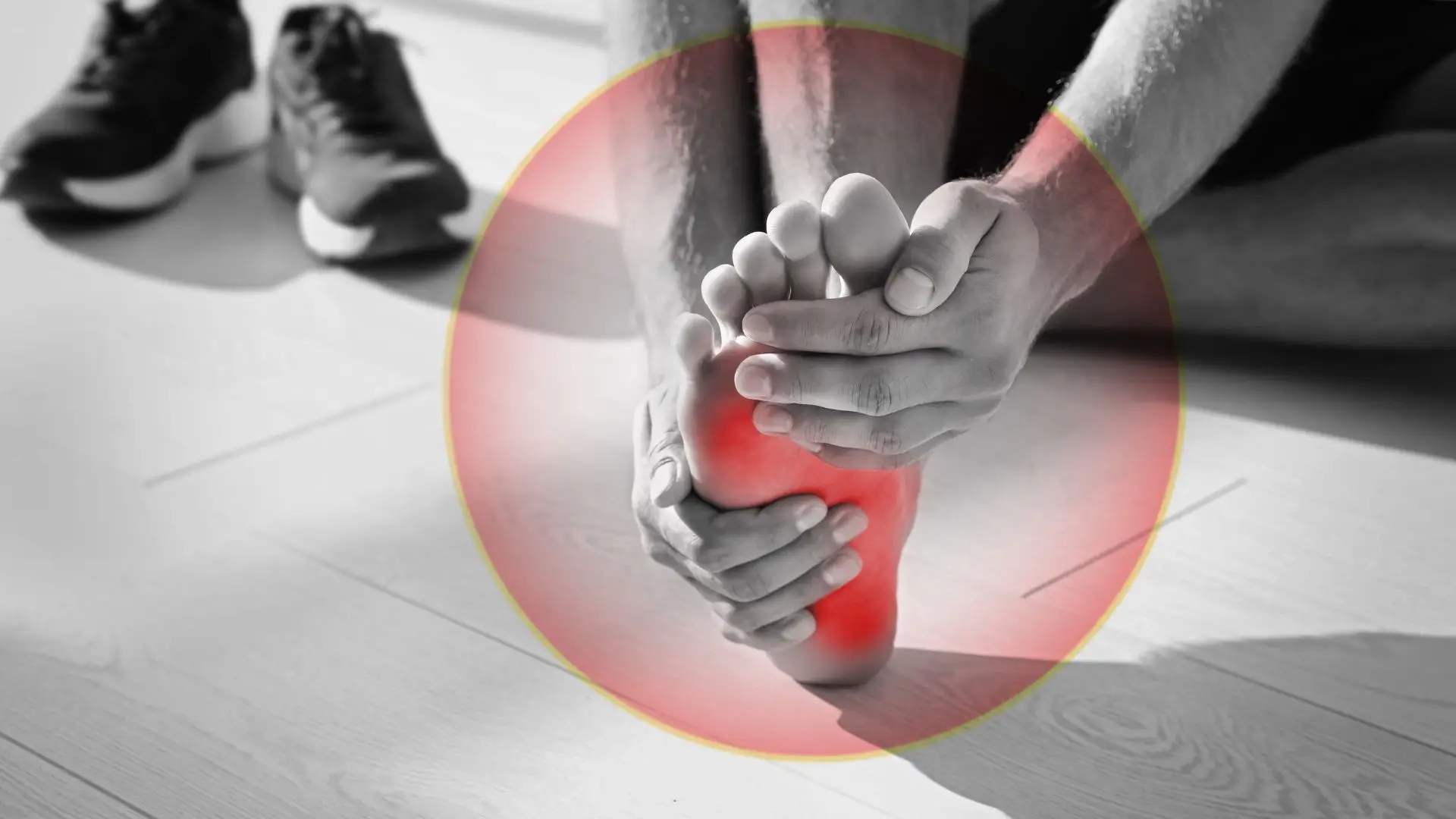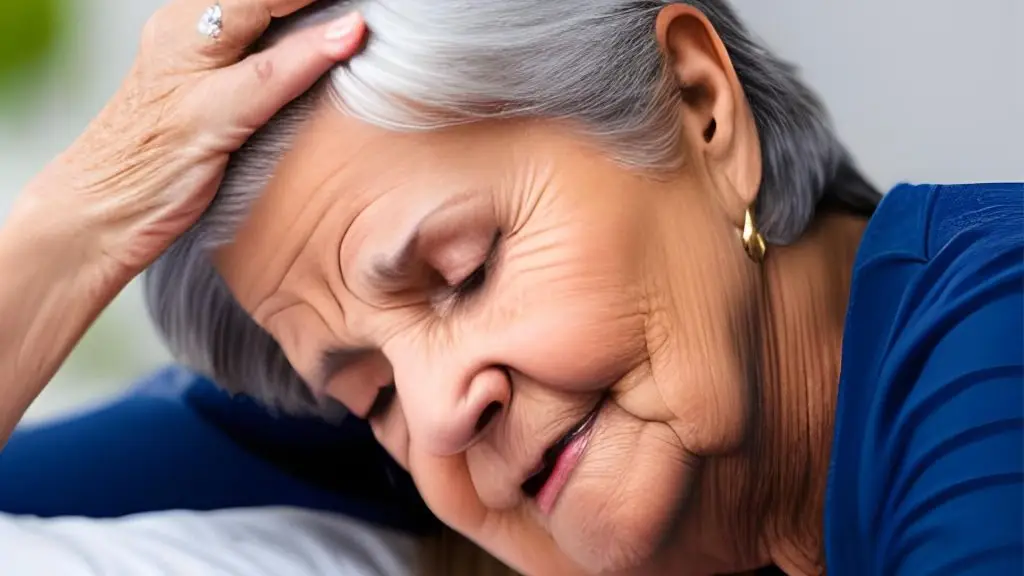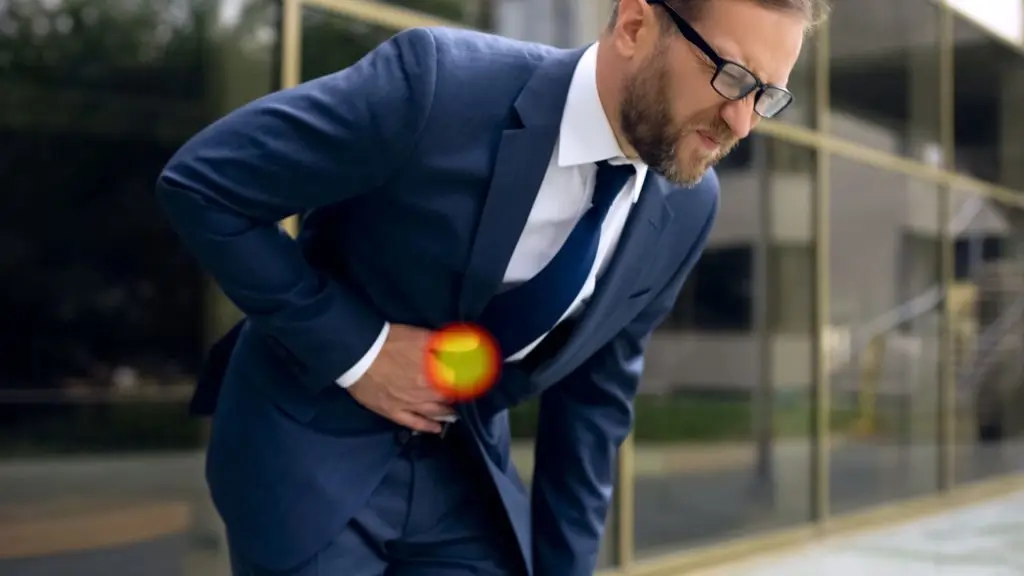

Understanding Chronic Pain: An Overview
Chronic pain is an often misunderstood and debilitating condition that affects millions of people worldwide. It is a persistent pain that lasts for weeks, months, or even years, and can significantly impact a person’s quality of life.
To start with, it is essential to understand that chronic pain is not merely a symptom but a complex and multifaceted condition in itself. Unlike acute pain, which serves as a warning sign of injury or illness, chronic pain persists long after the initial injury has healed. It can result from various underlying causes such as musculoskeletal disorders, nerve damage, autoimmune conditions, or even unknown reasons.
Living with chronic pain can be incredibly challenging. The pain can manifest in different ways, including constant aching, sharp shooting sensations, burning or tingling, and even stiffness. It can affect not only physical well-being but also mental and emotional health, leading to depression, anxiety, and decreased overall functioning.
Furthermore, chronic pain can impact specific populations differently. In examining how chronic pain affects specific groups such as the elderly, children, or pregnant women, we gain insight into the unique challenges they face. Elderly individuals may experience chronic pain due to age-related conditions like arthritis or degenerative disc disease. Children with chronic pain may face difficulties in school, social interactions, and overall development. Pregnant women may encounter unique challenges due to the limitations of available pain management options during pregnancy.
Understanding chronic pain is the first step towards managing it effectively. In this subchapter, we will explore the various treatment options available, including a combination of medical interventions, physical therapies, psychological techniques, and lifestyle modifications.
Causes and Triggers of Chronic Pain
Understanding the causes and triggers of chronic pain is crucial for individuals suffering from this debilitating condition. Chronic pain is defined as persistent pain that lasts for weeks, months, or even years, and it can greatly impact one’s quality of life.
There are numerous causes of chronic pain, and it is often a complex interplay of multiple factors. One common cause is an injury or trauma that has damaged tissues, nerves, or joints. Conditions like arthritis, fibromyalgia, and back pain are also frequent culprits. In addition, chronic pain can be a result of underlying medical conditions, such as cancer, multiple sclerosis, or diabetes. Psychological factors, including stress, anxiety, and depression, can exacerbate chronic pain, forming a vicious cycle that is challenging to break.
Triggers for chronic pain can vary from person to person, and understanding one’s specific triggers is essential for effective pain management. Physical activity, overexertion, or repetitive motion can worsen pain symptoms for some individuals. Changes in weather, temperature, or barometric pressure have also been known to influence pain levels. Emotional stress, lack of sleep, and certain foods or drinks can act as triggers as well. By identifying and avoiding these triggers, individuals can better manage their pain and prevent flare-ups.
Examining how chronic pain affects specific groups is crucial to tailor treatment approaches accordingly. Elderly individuals may experience chronic pain due to age-related degeneration, osteoporosis, or arthritis. Children with chronic pain often face unique challenges, as their pain may be dismissed or overlooked. Pregnant women may contend with additional discomforts and limitations, as their bodies undergo significant changes. Understanding the specific needs and concerns of these populations is essential for healthcare providers and loved ones supporting individuals with chronic pain.
The Physiology of Pain
Understanding the physiology of pain is crucial for chronic pain sufferers looking to effectively manage their condition. This section aims to provide a comprehensive overview of the science behind pain, shedding light on the intricate mechanisms that underlie this complex sensation. By delving into the physiology of pain, readers will gain valuable insights into the factors influencing their chronic pain experience, empowering them to make informed decisions about their pain management strategies.
To comprehend the intricacies of chronic pain, it is essential to first grasp the basics of pain itself. Pain is a multifaceted phenomenon involving intricate interplay between various bodily systems, including the nervous and immune systems. Nociceptors, specialized nerve endings, play a pivotal role in detecting potentially damaging stimuli and transmitting pain signals to the brain.
This section also highlights how chronic pain manifests differently in specific population groups, such as the elderly, children, and pregnant women. The aging process, for instance, can alter pain perception and tolerance, making pain management more challenging for elderly individuals. Similarly, children may struggle to communicate their pain experiences effectively, requiring tailored approaches to pain assessment and management. Pregnant women face unique challenges, as hormonal changes and physiological adaptations can impact pain processing and treatment options.
By understanding the physiological factors influencing chronic pain in specific populations, sufferers can seek appropriate support and adopt strategies tailored to their unique circumstances.
Ultimately, comprehending the physiology of pain is the first step towards taking control of one’s chronic pain journey. Armed with this knowledge, chronic pain sufferers can engage in informed conversations with healthcare professionals, advocate for personalized treatment plans, and explore a range of strategies to manage their pain effectively.


The Psychological Impact of Chronic Pain
Living with chronic pain can have a profound psychological impact on individuals. Not only does it affect their physical well-being, but it also takes a toll on their mental and emotional health.
One of the most common psychological impacts of chronic pain is depression. The constant pain can lead to feelings of hopelessness, sadness, and loss of interest in activities that were once enjoyed. Chronic pain sufferers may also experience anxiety, constantly worrying about their pain worsening or how it will affect their daily lives. Sleep disturbances and fatigue are common, further exacerbating their mental health.
Examining how chronic pain affects specific groups, such as elderly individuals, children, or pregnant women, provides valuable insights into their unique psychological challenges. For instance, elderly individuals may experience increased feelings of isolation and a sense of burden due to their limited mobility. Children with chronic pain may struggle with school attendance, social interactions, and emotional well-being. Pregnant women may face additional concerns about the impact of pain medication on their unborn child, leading to heightened anxiety.
To effectively manage the psychological impact of chronic pain, sufferers need to develop coping strategies. These may include seeking support from mental health professionals, joining support groups, and practicing relaxation techniques such as meditation or deep breathing exercises. Cognitive-behavioural therapy can also be beneficial in helping individuals reframe negative thoughts and manage their pain more effectively.
Common Misconceptions about Chronic Pain
Living with chronic pain can be an overwhelming and isolating experience. Often misunderstood by those who have never experienced it, chronic pain sufferers frequently encounter misconceptions that further exacerbate their already challenging situation.
Misconception 1: “It’s all in your head.”
One of the most hurtful misconceptions about chronic pain is the belief that it is purely psychological or imagined. Chronic pain is a real physical condition that affects millions of individuals worldwide. It is often caused by underlying medical conditions such as arthritis, fibromyalgia, or nerve damage. Sufferers should never feel invalidated or dismissed due to this misconception.
Misconception 2: “You just need to toughen up.”
Chronic pain is not a sign of weakness or lack of resilience. It is a complex condition that can significantly impact one’s quality of life. Simply “toughening up” is not a solution, as chronic pain requires comprehensive management strategies that often involve a multidisciplinary approach including medication, physical therapy, and psychological support.
Misconception 3: “Only elderly individuals experience chronic pain.”
While chronic pain is more prevalent among the elderly population, it can affect people of all ages, including children and pregnant women. Each group faces unique challenges in managing chronic pain, and it is crucial to acknowledge and address their specific needs. Understanding the impact of chronic pain on these specific populations is vital for providing appropriate care and support.
Misconception 4: “Pain medication is the only solution.”
While medication can play a crucial role in managing chronic pain, it is not the sole solution. Chronic pain management often involves a combination of approaches, including physical therapy, mindfulness techniques, lifestyle modifications, and alternative therapies such as acupuncture or chiropractic care. It is important for chronic pain sufferers to explore various treatment options and work closely with healthcare professionals to find the most effective strategies for their individual needs.
Misconception 5: “You should be able to function normally.”
Chronic pain can significantly impact a person’s ability to carry out daily activities, resulting in limitations and disruptions to their lives. It is essential to understand that chronic pain sufferers may need to adapt their routines and lifestyles to accommodate their condition. Encouraging empathy and support from friends, family, and employers is crucial in helping chronic pain sufferers navigate their daily lives.


Chronic Pain in Specific Populations
Chronic Pain in Elderly Individuals
As we age, our bodies undergo numerous changes, and unfortunately, one of the most common challenges faced by elderly individuals is chronic pain.
The aging process brings about physiological changes that can exacerbate the experience of chronic pain. Conditions such as arthritis, osteoporosis, and degenerative disc disease become more prevalent in older adults, leading to joint pain, backache, and musculoskeletal discomfort. Furthermore, age-related changes in the nervous system can amplify pain signals, making even minor aches and discomfort feel more intense.
It is crucial to understand that chronic pain in elderly individuals is not a normal part of aging, and it should not be dismissed or ignored. Unfortunately, many seniors tend to underreport their pain, assuming it is a natural consequence of getting older. This misconception often leads to inadequate pain management and decreased overall well-being.
Addressing chronic pain in elderly individuals requires a comprehensive approach. Healthcare providers should consider the individual’s medical history, physical capabilities, and cognitive function to develop a tailored treatment plan. Non-pharmacological interventions such as physical therapy, occupational therapy, and gentle exercise can help improve mobility, strengthen muscles, and reduce pain.
Pharmacological interventions, including analgesics and anti-inflammatory medications, may also be necessary to alleviate pain in elderly individuals. However, caution must be exercised to minimize potential side effects and drug interactions, as older adults often have multiple comorbidities and take multiple medications.
In addition to physical interventions, addressing the emotional and psychological impact of chronic pain is crucial. Elderly individuals with chronic pain are at a higher risk of developing depression, anxiety, and social isolation. Therefore, incorporating strategies such as cognitive-behavioral therapy, counseling, and support groups can provide psychological support and enhance overall well-being.
Finally, it is essential for elderly individuals with chronic pain to actively participate in their pain management. This includes developing self-care routines, adhering to prescribed treatments, and communicating openly with healthcare providers. By empowering themselves with knowledge and taking an active role in their pain management, elderly individuals can improve their quality of life and regain control over their well-being.
Chronic Pain in Children
Chronic pain is often associated with adults, but it is important to recognize that children can also suffer from this debilitating condition.
It is estimated that approximately 20% of children worldwide experience chronic pain, making it a widespread concern.
Children with chronic pain face numerous hurdles in their everyday lives. Pain can interfere with their ability to participate in school, socialize with friends, and engage in physical activities. This can lead to feelings of isolation, frustration, and anxiety. It is crucial for parents, caregivers, and healthcare professionals to recognize these challenges and provide the necessary support.
Common conditions that can cause chronic pain in children include migraines, musculoskeletal disorders, autoimmune diseases, and psychological factors such as anxiety and depression. Identifying the root cause will help tailor treatment plans that address both the physical and emotional aspects of the pain.
Treatment options for chronic pain in children vary depending on the individual’s condition and needs. They may include a combination of medications, physical therapy, cognitive-behavioral therapy, and complementary therapies such as acupuncture or mindfulness practices. It is important to work closely with healthcare professionals to find the most suitable treatment plan for each child.
Additionally, providing emotional support and creating a supportive environment is crucial for children living with chronic pain. Encouraging open communication, validating their experiences, and involving them in decision-making processes can empower children and help them feel more in control of their pain.
It is also essential for parents and caregivers to educate themselves about chronic pain in children. By understanding the condition, its impact, and available treatment options, they can better support their child’s journey towards managing and living with chronic pain.
Pediatric Chronic Pain Conditions
One of the most common pediatric chronic pain conditions is juvenile idiopathic arthritis (JIA). JIA is an autoimmune disorder that causes joint inflammation and pain in children. It can be challenging to diagnose since its symptoms mimic other conditions, but early detection is crucial to prevent long-term joint damage. Treatment options for JIA include medications, physical therapy, and lifestyle modifications to manage pain and improve quality of life.
Another common chronic pain condition in children is complex regional pain syndrome (CRPS). CRPS typically occurs after an injury or trauma and is characterized by severe, continuous pain that may spread to other parts of the body. Children with CRPS may also experience changes in skin color and temperature, as well as swelling and limited mobility. Treatment for CRPS often involves a multidisciplinary approach, including physical therapy, medications, and psychological support.
Fibromyalgia, a condition characterized by widespread musculoskeletal pain, is not limited to adults. Children can also develop fibromyalgia, which can affect their physical and emotional well-being. Diagnosing fibromyalgia in children can be challenging, as symptoms may vary and overlap with other conditions. Treatment for pediatric fibromyalgia typically involves a combination of medications, physical therapy, and cognitive-behavioral therapy to manage pain and improve sleep quality.
Chronic headaches, such as migraines and tension headaches, are also prevalent in children. These headaches can be debilitating and significantly impact a child’s daily activities and school performance. Treatment options for chronic headaches include medications, lifestyle modifications, stress management techniques, and cognitive-behavioral therapy.
It is important for parents and caregivers to understand that pediatric chronic pain conditions require specialized care. Seeking medical attention from healthcare professionals experienced in pediatric pain management is crucial to ensure proper diagnosis and tailored treatment plans.
Living with pediatric chronic pain conditions can be challenging for both children and their families. It is essential to provide support, education, and resources for children and their caregivers to help them navigate and cope with the physical and emotional aspects of chronic pain.
In conclusion, pediatric chronic pain conditions are a reality for many children. By raising awareness and providing appropriate care, we can help alleviate the suffering of these young individuals and improve their quality of life.
Chronic Pain in Pregnant Women
Pregnancy is a beautiful and transformative experience for many women, but it can also come with its fair share of discomfort and pain. As chronic pain sufferers, it is essential to understand the unique challenges faced by pregnant women and how to manage pregnancy-related pain effectively.
One of the most common pregnancy-related pain issues is lower back pain. As the baby grows and the center of gravity shifts, the increased pressure on the spine can lead to discomfort and muscle strain. Hormonal changes during pregnancy also affect the ligaments and joints, making them more prone to injury. Simple exercises like prenatal yoga, gentle stretching, and maintaining good posture can help alleviate lower back pain.
Another prevalent pain issue during pregnancy is pelvic pain. This can manifest as a dull ache or sharp shooting pain in the pelvic region. The growing uterus and the release of hormones can cause the pelvic joints to become more flexible, resulting in instability and discomfort. Applying heat or cold packs, wearing a pelvic support belt, and practicing pelvic floor exercises can provide relief from pelvic pain.
Sciatica, a condition characterized by pain radiating down the back of the leg, can also occur during pregnancy. The pressure exerted by the expanding uterus on the sciatic nerve can lead to shooting pain, tingling, or numbness in the buttocks and legs. Gentle stretching exercises and avoiding prolonged sitting or standing can help manage sciatic pain.
Additionally, round ligament pain is a common complaint among pregnant women. As the uterus expands, the ligaments that support it stretch and can cause sharp, stabbing pain in the lower abdomen or groin. Gentle movements, such as changing positions slowly or using pillows for support, can ease round ligament pain.
Although it is crucial to address pregnancy-related pain, it is equally important to do so safely. Consultation with a healthcare provider specializing in prenatal care is essential before starting any new pain management techniques, as certain treatments may not be suitable for pregnant women.